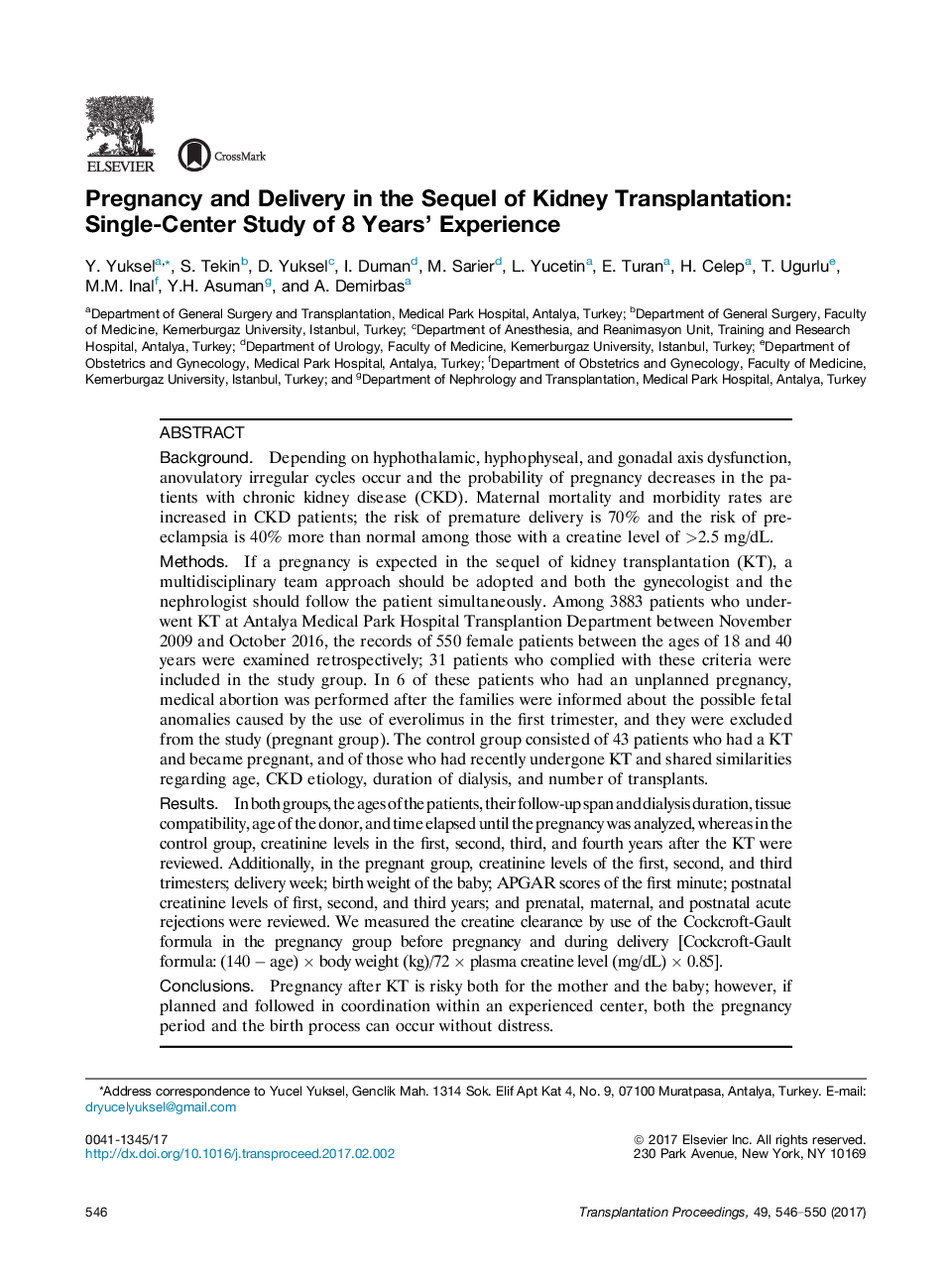| کد مقاله | کد نشریه | سال انتشار | مقاله انگلیسی | نسخه تمام متن |
|---|---|---|---|---|
| 5728874 | 1411672 | 2017 | 5 صفحه PDF | دانلود رایگان |
BackgroundDepending on hyphothalamic, hyphophyseal, and gonadal axis dysfunction, anovulatory irregular cycles occur and the probability of pregnancy decreases in the patients with chronic kidney disease (CKD). Maternal mortality and morbidity rates are increased in CKD patients; the risk of premature delivery is 70% and the risk of preeclampsia is 40% more than normal among those with a creatine level of >2.5 mg/dL.MethodsIf a pregnancy is expected in the sequel of kidney transplantation (KT), a multidisciplinary team approach should be adopted and both the gynecologist and the nephrologist should follow the patient simultaneously. Among 3883 patients who underwent KT at Antalya Medical Park Hospital Transplantion Department between November 2009 and October 2016, the records of 550 female patients between the ages of 18 and 40 years were examined retrospectively; 31 patients who complied with these criteria were included in the study group. In 6 of these patients who had an unplanned pregnancy, medical abortion was performed after the families were informed about the possible fetal anomalies caused by the use of everolimus in the first trimester, and they were excluded from the study (pregnant group). The control group consisted of 43 patients who had a KT and became pregnant, and of those who had recently undergone KT and shared similarities regarding age, CKD etiology, duration of dialysis, and number of transplants.ResultsIn both groups, the ages of the patients, their follow-up span and dialysis duration, tissue compatibility, age of the donor, and time elapsed until the pregnancy was analyzed, whereas in the control group, creatinine levels in the first, second, third, and fourth years after the KT were reviewed. Additionally, in the pregnant group, creatinine levels of the first, second, and third trimesters; delivery week; birth weight of the baby; APGAR scores of the first minute; postnatal creatinine levels of first, second, and third years; and prenatal, maternal, and postnatal acute rejections were reviewed. We measured the creatine clearance by use of the Cockcroft-Gault formula in the pregnancy group before pregnancy and during delivery [Cockcroft-Gault formula: (140Â â age)Â Ã body weight (kg)/72Â Ã plasma creatine level (mg/dL)Â Ã 0.85].ConclusionsPregnancy after KT is risky both for the mother and the baby; however, if planned and followed in coordination within an experienced center, both the pregnancy period and the birth process can occur without distress.
Journal: Transplantation Proceedings - Volume 49, Issue 3, April 2017, Pages 546-550
